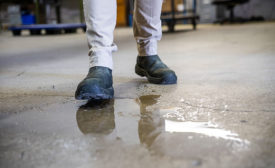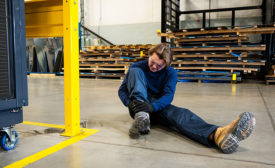Home » Keywords: » walking working surfaces standard
Items Tagged with 'walking working surfaces standard'
ARTICLES
2019 top standards- Critical OSHA Standards
OSHA walking-working surfaces standard
29 CFR 1910.21-1910.30 Final Rule Industry Walking-Working Surfaces Standards Personal Protective Equipment
December 20, 2018
Complying with OSHA’s walking-working surface standard
Fall protection beyond construction
October 15, 2018
Get our new eMagazine delivered to your inbox every month.
Stay in the know on the latest safety trends.
SUBSCRIBE TODAYCopyright ©2024. All Rights Reserved BNP Media.
Design, CMS, Hosting & Web Development :: ePublishing




